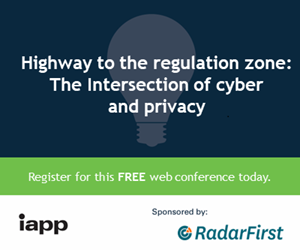Bring Your Own Device (BYOD), while well-intentioned, can make IT managers, CIOs and especially employees want to pull their hair out.
The downfall of most Enterprise Mobile Management (EMM) and Mobile Device Management (MDM) solutions is that they pose too many restrictions or too much control over the user’s device. Quite simply, they don’t have the end user in mind. An employee may conclude that the employer’s promise of EMM device containerization is more of an illusion of privacy than a real comfort because employees don’t often segregate their work and personal lives and data neatly into digital sandboxes.
The BYOD movement was brought to light by employees wanting more convenience and less restrictions, and EMM is putting us right back where we started—to the old days of restricted corporate-supplied devices.
Most companies are completely unaware that there’s another option, so they settle for something less than what successfully meets the needs of IT and their employees.
No Data on the Device
There is a better way. In the coming years, we’re going to start seeing the use of mobile apps that enable access to corporate assets on the employee’s personal device without allowing that corporate data to actually reside on the device and without segregating personal and corporate data.
There are two key benefits to this:
- First, keeping data off the device limits the potential for compromise if the device is lost or stolen and taken offline.
- Second, it gives employees the freedom to use their devices how they please, without worrying about trade-offs like remote wiping, invasion of privacy or a compromised user experience.
Let me give you an example.
Recently, at ZixCorp, we had several government organizations approach us saying that the “no-data-on-the-device” approach would be conducive to their work, where data spillage and the escalation of “now-confidential” information normally would eliminate BYOD as an option. For instance, contractors might be working on a project that escalates in terms of importance and confidentiality and is no longer their responsibility. This means that contractors have to bring in their personal devices to have everything wiped instead of simply deleting that unsecured data from the company server.
This approach also makes sense because the majority of employees only want or need access to one or two corporate apps, such as email. For others who need access to more data, the added controls and restrictions of EMM or MDM make the most sense. But for the most part, companies shouldn’t need to impose a second corporate-owned device or restrictions on the employee’s personal device when the solution could be as simple as downloading an app.
Significantly, without access to other aspects of the personal device, this BYOD architecture eliminates any corporate legal liability in the event employees or contractors want to sue their company for illegal actions associated with monitoring personal mobile data.
Finding the Balance Between Privacy and Convenience
It’s important to point out that with privacy and convenience, one is often sacrificed for the other—especially with BYOD. Lady Justice’s scales can never seem to balance.
It’s a given that employees expect to use their personal devices how and when they need them, but such convenience often runs counter to an IT organization’s efforts to protect corporate data.
The no-data-on-the-device approach to BYOD creates a way to close the gap between convenience and security. It offers the control, convenience and privacy that employees demand while at the same time guarantees to employers a level of security not seen by traditional BYOD solutions.
photo credit: On the Verge of Siri via photopin (license)































3 Comments
If you want to comment on this post, you need to login.